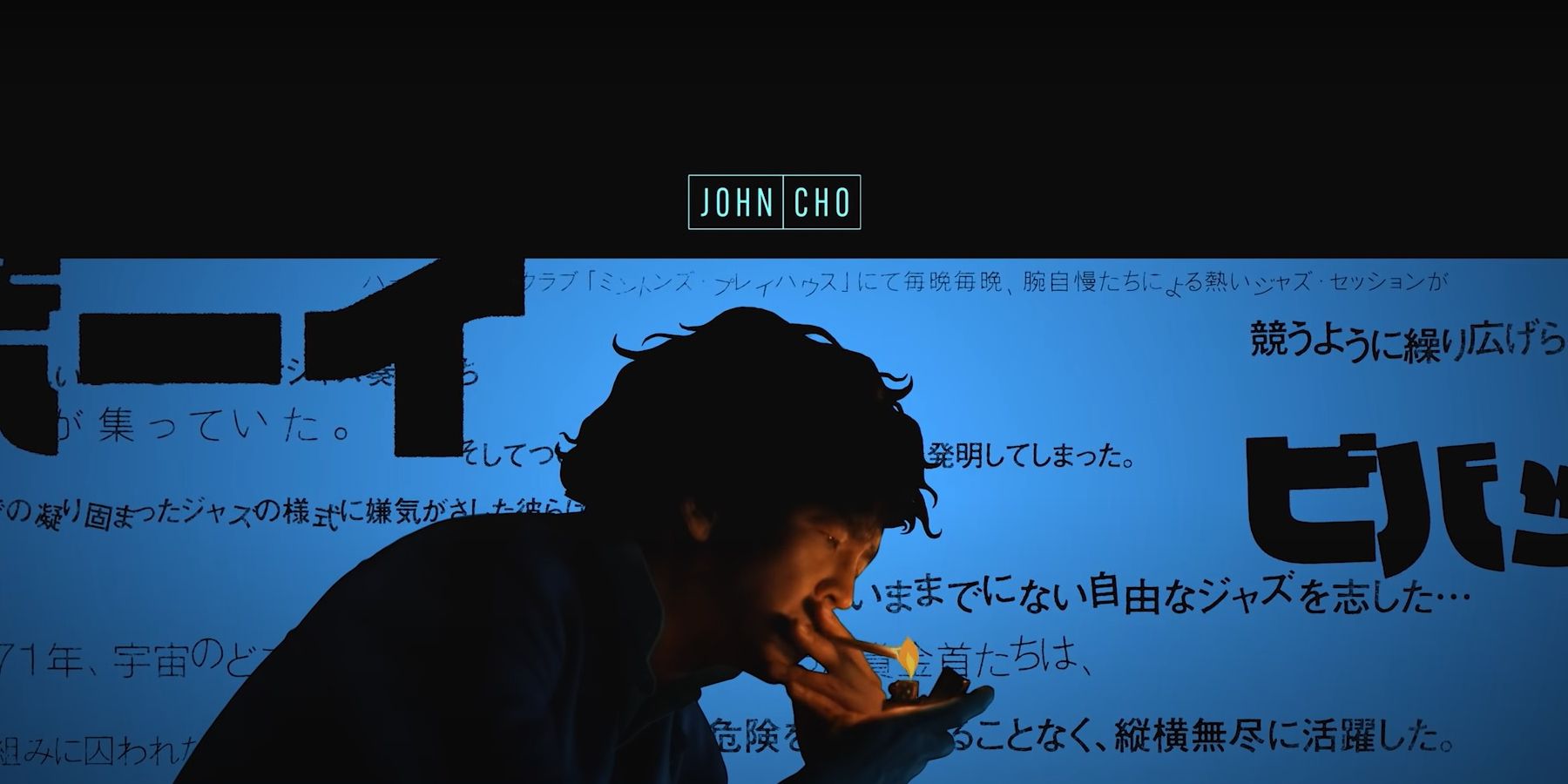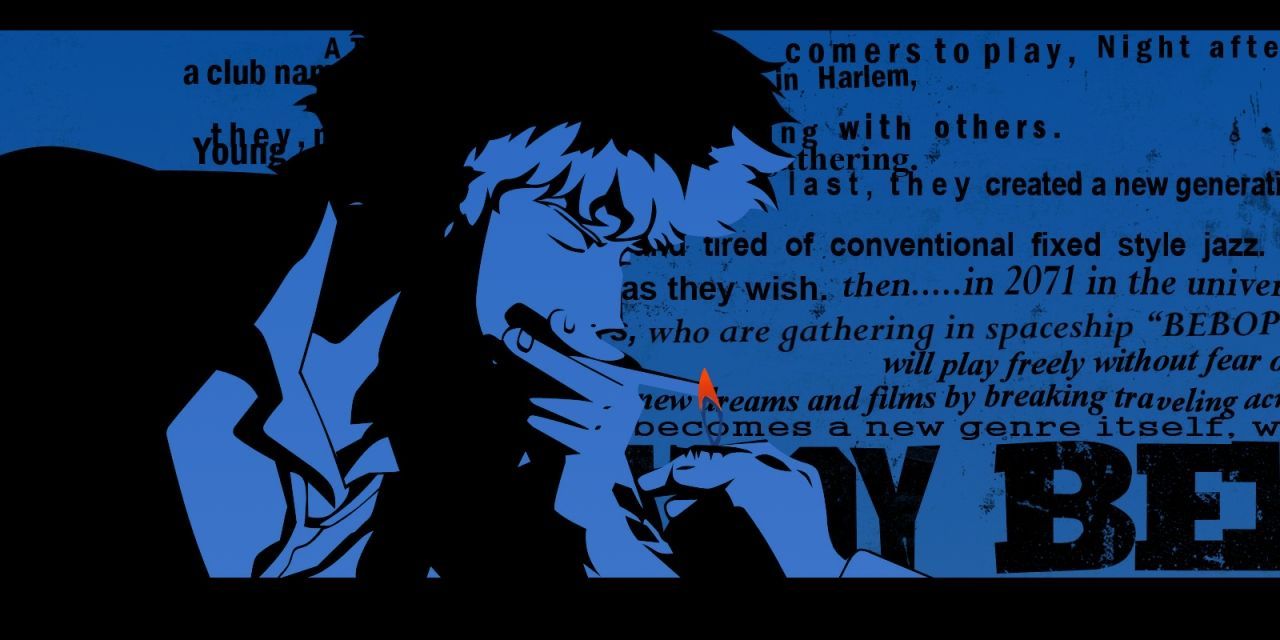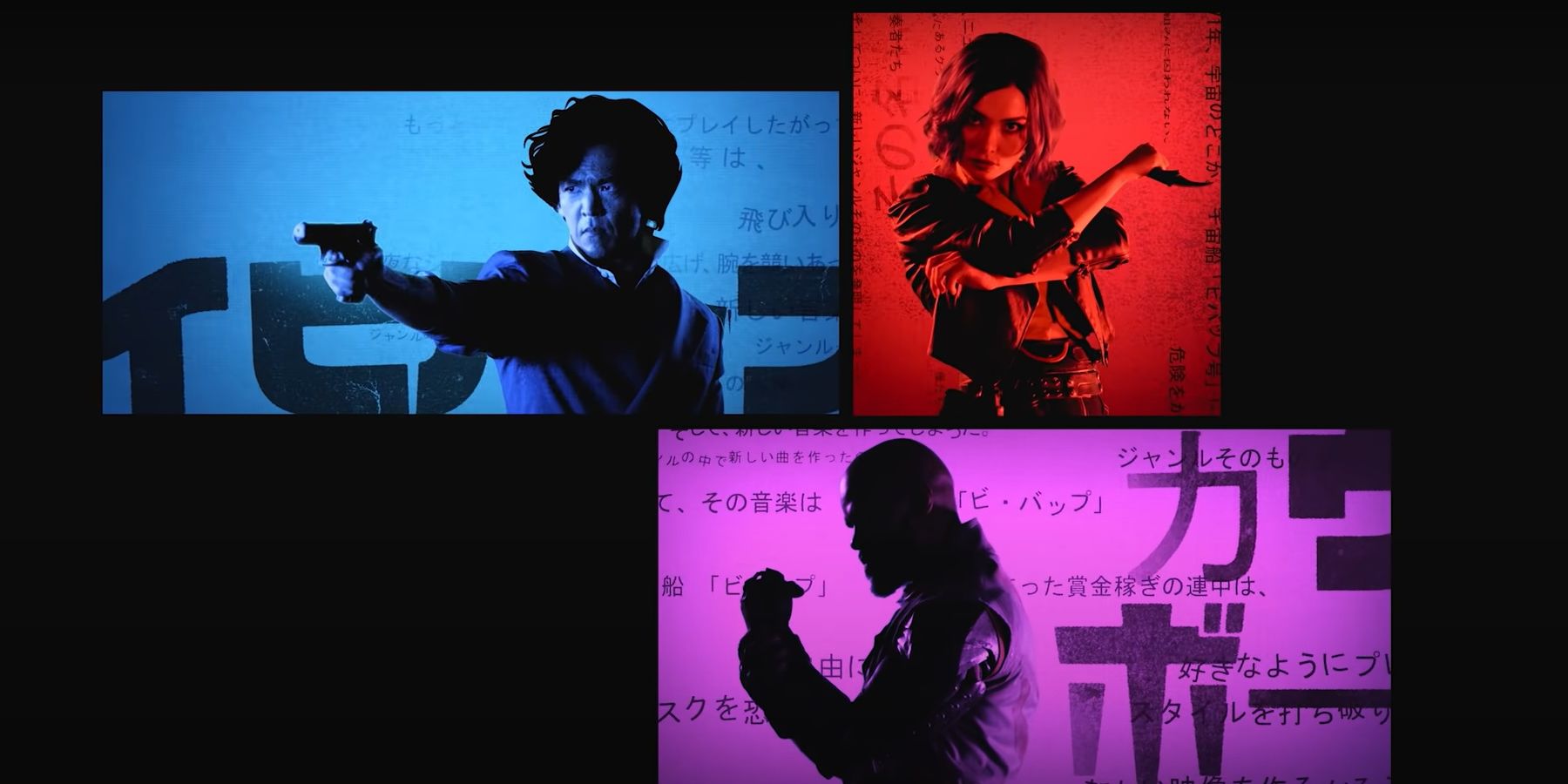Netflix's reveal of the opening credits sequence for the American live-action Cowboy Bebop TV series has the internet talking. Most of the discussion has been about just how similar this opening is, for better or worse, to the original anime, reusing Yoko Kanno and The Seatbelts' theme song "Tank!" and recreating many of the same visuals in live-action. For all these similarities, however, there are several major differences. Many have noted the absence of Ed and the presence of scenes from various episodes. One difference that hasn't been remarked upon as much, but feels subtly significant, is the language.
Both Cowboy Bebop opening sequences present images of the characters and their spaceships against colored backdrops filled with text connecting to the series' background and jazz inspirations. In the original anime opening, however, all of this text is written in English, while in the Netflix remake, the text is in Japanese. In both versions of the Cowboy Bebop opening, the language of the text is not the native language of the people making the series.
Cowboy Bebop was one of the rare anime to become even more popular in America than it was in Japan, in part because viewers who didn't typically watch anime could still feel at home with the show thanks to its heavy American influences. The main artistic reference points of jazz music, film noir and Westerns are about as American as they come. There were homegrown points of reference as well, such as actor Yusaku Matsuda being a model for Spike and many similarities to Lupin III, but Cowboy Bebop as a whole drew more from a hodgepodge of American, European and Chinese influences than anything specifically Japanese.
Redoing the opening with Japanese text instead of English text gives American viewers an experience less similar to how they first experienced Cowboy Bebop and closer to how Japanese audiences experienced it. Aspects that made the anime feel approachable to American viewers were meant to make it feel foreign and exotic to Japanese viewers. In this scenario, changing the text language to Japanese for an American production is a change that actually makes it more faithful to the original intention of the source material.
What will be really interesting to see is if and/or how the show itself ends up reflecting this philosophy. If the anime was about international but primarily American pop culture reflected through a Japanese perspective, then the Netflix remake has a chance to do the reverse in presenting Japanese pop culture from an American perspective. The literal act of remaking Cowboy Bebop is technically doing this already, but there are opportunities to go deeper with this. The new Bebop shouldn't merely be drawing inspiration from the old Bebop, but should go further and offer its own unique synthesis of diverse pop culture influences in the same manner the original did.
The live-action Cowboy Bebop premieres on Netflix on Nov. 19. The original anime is currently available for streaming on Hulu.



